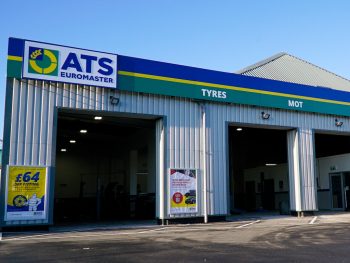Demand for Class 7 MOTs has more than tripled in the last few years as a result of fleets running longer van lifecycles.

ATS Euromaster has reported a significant 216% uplift in the requirement for such MOTs – required for commercial vehicles with a gross weight between 3 and 3.5 tonnes – compared with 2020.
It’s the latest evidence of fleet managers adapting to longer commercial vehicle lifecycles by making their vans work longer before replacement – the result of the huge new vehicle supply issues seen in recent years.
According to recent data from the Association of Fleet Professionals (AFP), its members are now extending replacement cycles to lengths that “would previously have been considered unimaginable”. This is due to fleet managers developing new skills that make such longer cycles operationally viable and economically attractive – the AFP says some operators are extending vehicle replacement cycles to eight years without encountering major problems.
As a result, fleet managers are needing to adapt their management of service, maintenance and repair (SMR) spend and to manage MOT requirements.
Mark Holland, operations director, ATS Euromaster, explained: “We’ve been watching the MOT demand for Class 7 vehicles increase year on year.
“In 2021, we saw a 70% uplift in MOT class 7 volumes compared with 2020 volumes. Then 2022 delivered an 86% uplift on 2021 volumes. So, demand has been growing at a staggering volume as the commercial vehicle fleet ages.”
But Holland also said that ATS is seeing changing attitudes to fleet management.
“For example, if a van comes in for new tyres, we may also be asked to do a vehicle health check at the same time to identify any areas of concern that might keep the vehicle off-road. It’s a typical example of fleet managers becoming more adept at running older and higher-mileage vehicles.”
Latest Government figures show nearly 40% of Class 7 vehicles fail their MOT. Lamps, reflectors and electrical equipment lead the way as the most likely cause of failure (20.35%), followed by brakes (15.41%), then suspension (10.24%).
In terms of the greatest percentage of dangerous defects, brakes at 44.58% and tyres (35.79%) were a long way ahead of any other defects.
“These figures correlate very closely with what we are seeing in our MOT bays,” continued Holland. “The vans are being worked extremely hard and with much of it being final-mile delivery work, this involves plenty of component-sapping kerb-bouncing.”
Holland also advised fleet managers to consider planned maintenance, if they’re not doing this already, to help avoid the expense of vehicle downtime.
“A service such as our free digital vehicle health check can give you that valuable insight to help avoid that.”

